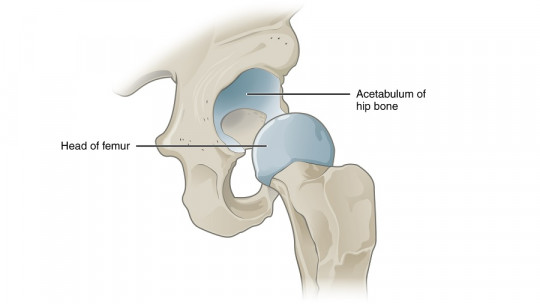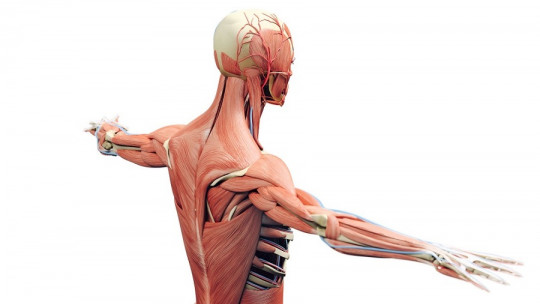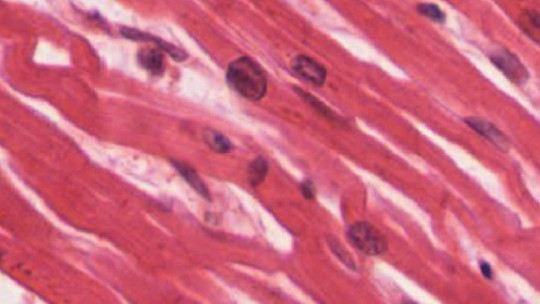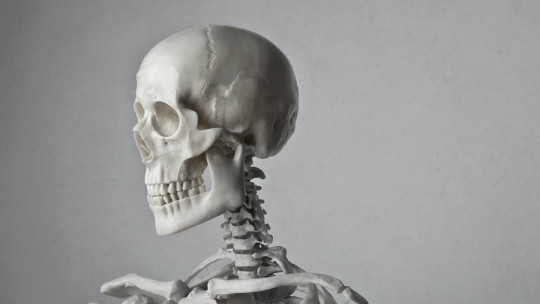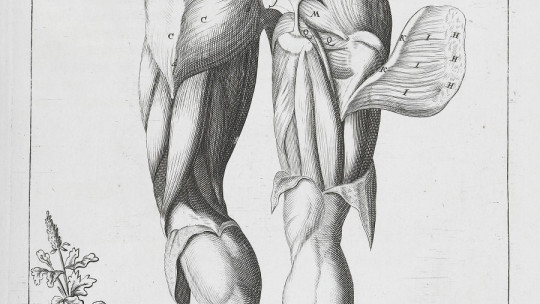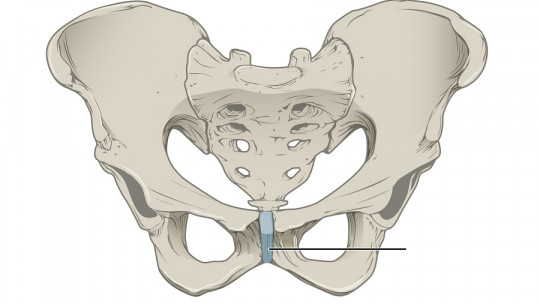The musculoskeletal system is made up of the osteoarticular system (bones, ligaments and joints) and the muscular system (muscles and tendons). The human body has more than 650 voluntary muscles (40% of our weight) and a total of 206 bones, whose functionality and anatomy together allow us to move and relate to the environment in a posture that defines us as a species but, at the same time, time, it is changing based on environmental requirements.
The human body is a true work of art of biomechanics, since each bone, tendon, muscle and joint has an essential function in the movement or transmission of information. For example, a minimum group of 12 muscles participates in something as anecdotal as the production of a smile but, in addition, the number of tissues and muscle fibers involved depend on the individual message that we want to convey.
With these data and figures, it is impossible to deny that the musculoskeletal system is a source of functionality and scientific knowledge. We have already covered the musculature and skeletal system on other occasions, but we usually leave out an equally important part: the joints. We take this opportunity to tell you everything about these anatomical joining structures, especially the type diarthrosis
What is a joint?
We cannot begin by building the house from the roof and, therefore, we must briefly explore the world of joints in the first instance before diving into diarthrosis. A joint is defined as a place of union of firm consistency of two or more bones, whose function is to allow the movement of the components of the locomotor system
In addition to providing the “axes” of the extremities, they also provide the body with stability without interfering with the ability to move. The general articular elements can be collected in the following list:
Normally, when we think about these connecting structures, elbows and knees come to mind, but these only represent a tiny part of the joint world: of the total of 360 joints in the human body, 86 of them are located in the skull.
On the other hand, We present 32 joint formations in each of our upper extremities (64 total) and 31 in the lower extremities (62) If we focus on the trunk, we find 76 joints in the pelvis and spine, 66 in the thoracic section and 6 in the throat. As you can see, the location of these special structures is heterogeneous to say the least, especially if we take into account that many are located in places that would never occur to us in the first instance.
If we classify joints based on their functionality, we will obtain a minimum of 3 groups: diarthrosis, synarthrosis and amphiarthrosis. We tell you everything you need to know about the first of the categories in the following lines.
What is a diarthrosis?
Diarthroses are a type of synovial joints These are those that allow a wide range of movements to be executed, representing most of the joint elements of the extremities. Diarthroses have, in particular, compared to the rest, the fact that they are covered by a hyaline cartilage lining, a joint capsule and have reinforcing ligaments.
The diarthroses They are the most common types of joints in mammalian organisms, and all of them have 3 essential structures We tell you in detail.
1. Synovial cavity
It is a unique characteristic area in diarthrosis type joints. It is responsible for containing the synovial fluid previously described and is covered by the synovial membrane.
Within this space is synovial fluid, essential for understanding joint movement As far as rheological properties are concerned, this viscous fluid has viscosity, deformation speed and is a non-Newtonian fluid, that is, whose viscosity varies with the temperature and the shear stress applied to it.
Synovial fluid is of great clinical interest , because based on its composition, various pathologies can be detected. It generally contains few proteins and cells and is rich in hyaluronic acid, but if blood, pus or an excessive amount of fluid is observed in its compounds, pathologies such as injuries, infections or osteoarthritis can be suspected.
2. Joint capsule
It is the structure that surrounds the diarthrosis Each joint capsule is divided into 2 clear sections: an external fibrous layer and an internal synovial layer. The first section does not have much “special”, as it is composed of avascular tissue of a fibrous nature.
On the other hand, the internal synovial layer draws attention for containing synoviocytes, the cells that secrete the synovial fluid that we have already mentioned several times throughout this space. As they are responsible for secreting this fluid, synoviocytes or synovial fibroblasts (SF) have been the subject of study to explain joint pathologies, such as rheumatoid arthritis (RA).
Curiously, When analyzing patients with rheumatoid arthritis, it has been discovered that synoviocytes suffer hyperplastic phenomena (they increase in number) and show an altered phenotype which, among other things, is associated with the secretion of matrix-degrading enzymes. This certainly seems to be linked to the typical inflammation in the joints that people with RA experience.
3. Articular cartilage
The bones of the diarthroses are covered by a layer of hyaline cartilage This type of tissue is commonly found in the ribs, nose, larynx, and trachea, as well as the surface of many joint structures. The matrix of hyaline cartilage is composed mainly of type II collagen and chondroitin sulfate, a complex glycosaminoglycan usually associated with protein molecules.
The cartilage of diarthroses is found on the surface of the bones involved , inside the synovial cavity and bathed in synovial fluid. It should be noted that, although it is anatomically close to the menisci and articular discs, it is considered a completely different structure, since the latter are composed of fibrocartilage (compared to hyaline cartilage).
Functionality of diarthroses
This type of joint encompasses a large number of structures and, therefore, is found in various parts of the body, with different functionalities. In general, these can be summarized as performing flexion, extension and ulnar deviation work.
There are up to 7 general types of diarthrosis, among which are the following : sliding joints (carpus of the wrist, for example), “hinge” joints (elbow), condyloid joints (wrist joint) and many other examples.
If we want a clear idea about this type of joint that is so widespread in the vertebrate body, this is the following: diarthroses are mobile joints that are characterized by the possession of an intermediate membrane, which enables the existence of a synovial cavity and, therefore, the accumulation of synovial fluid, so important for the movements of our appendages to be carried out correctly.
Summary
With this short tour we have shown you the most common joints in the skeleton of vertebrates, but you must keep in mind that these are not the only ones. On the other side of the coin are the synarthroses, which are very little mobile , such as the unions between the bone structures that make up our skull. Nor can we forget about amphiarthroses, which are perfectly exemplified between the vertebral discs of our spine.
When we think of a joint, the elbow, wrist, fingers and knees quickly come to mind, but you should keep in mind that a meeting point between two flat bones is also considered a joint structure. In the end, the “joint” is any structure that allows two bones to join together, whether movement occurs or not.

